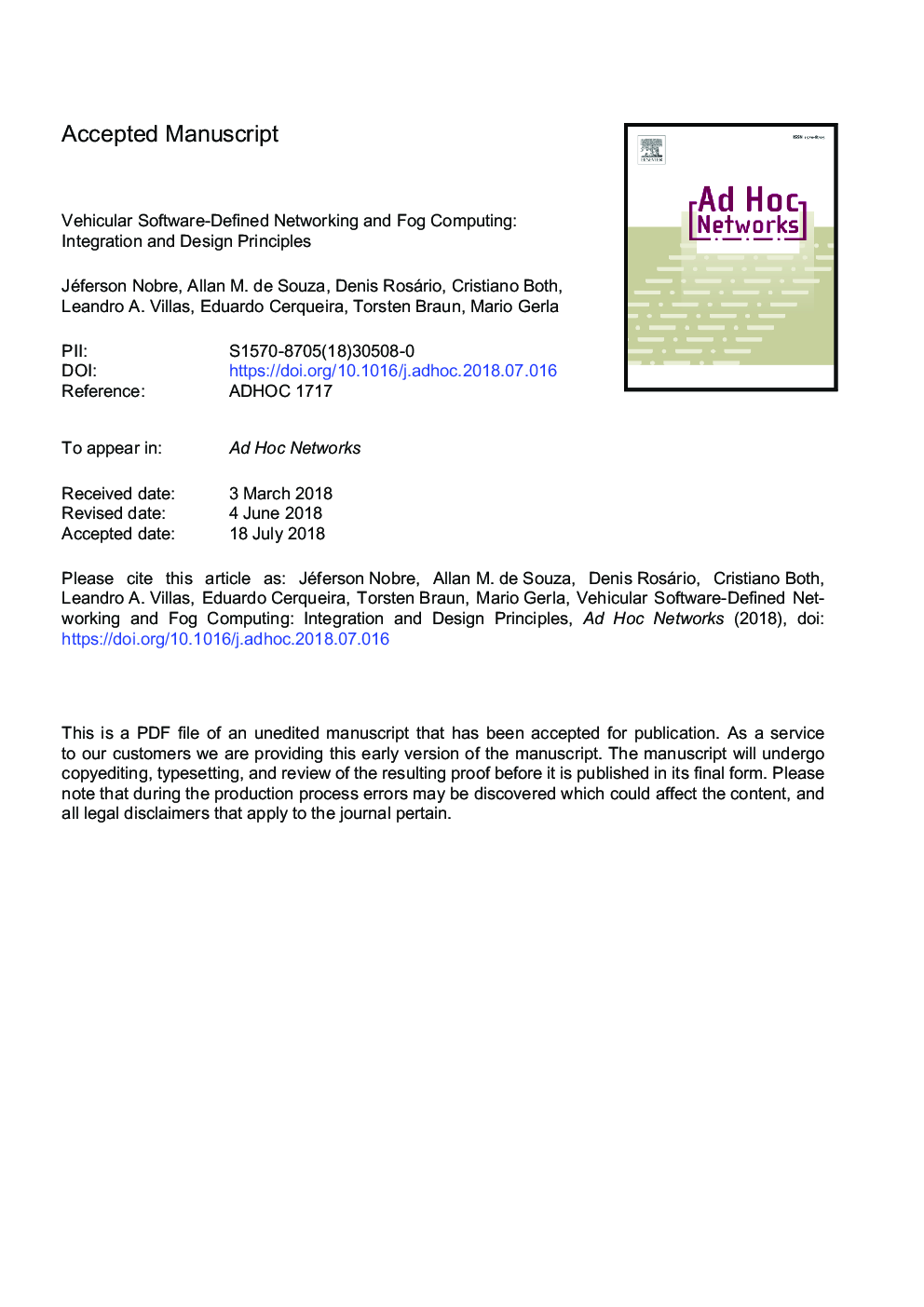| Article ID | Journal | Published Year | Pages | File Type |
|---|---|---|---|---|
| 10127129 | Ad Hoc Networks | 2019 | 31 Pages |
Abstract
Vehicular Networks (VN) enable the collaboration among vehicles and infrastructure to deliver network services, where usually value-added services are provided by cloud computing. In this context, fog computing can be deployed closer to the users to meet their needs with minimum help from the Internet infrastructure. Software Defined Networking (SDN) might support the use of large-scale fog-enabled VN services. However, the current management of each wireless network that composes the VN has restricted the exploration of fog-enabled VN services. Therefore, the design principles for a VN architecture is still an open issue, mainly because it is necessary to address the diversity of VN fog applications. In this article, we investigate the design principles for fog-enabled Vehicular Software Defined Networking (VSDN) focusing on the perspectives of the systems, networking, and services. We evaluated these design principles in a use case of a traffic management system for a fast traffic accident rescue, using real traffic accident data. Finally, potential research challenges and opportunities for integrated use fog-enabled VSDN are discussed.
Related Topics
Physical Sciences and Engineering
Computer Science
Computer Networks and Communications
Authors
Jéferson Campos Nobre, Allan M. de Souza, Denis Rosário, Cristiano Both, Leandro A. Villas, Eduardo Cerqueira, Torsten Braun, Mario Gerla,
